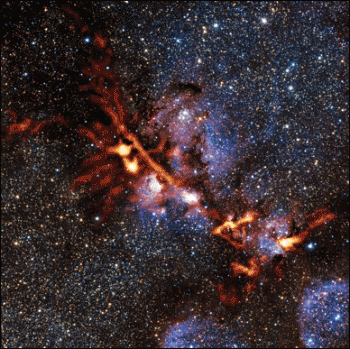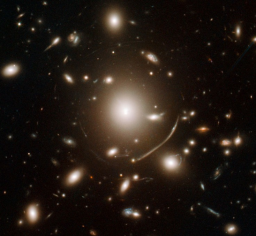News 2013
The new ArTéMiS camera has been successfully installed on the APEX telescope (Atacama Pathfinder Experiment). APEX is a 12 meter diameter telescope at an altitude of 5100m in the Atacama Desert, operating at sub-millimeter and sub-millimeter wavelengths - between infrared light and radio waves of the electromagnetic spectrum - a precious tool for astronomers to scrutinize the cold universe. This new instrument has just delivered a spectacular and very detailed view of the nebula of the Patte de Chat.
Read more in the French version
The new ArTéMiS camera has been successfully installed on the APEX telescope (Atacama Pathfinder Experiment). APEX is a 12 meter diameter telescope at an altitude of 5100m in the Atacama Desert, operating at sub-millimeter and sub-millimeter wavelengths - between infrared light and radio waves of the electromagnetic spectrum - a precious tool for astronomers to scrutinize the cold universe. This new instrument has just delivered a spectacular and very detailed view of the nebula of the Patte de Chat.
Read more in the French version
An international collaboration of astrophysicists, led by Martin Kilbinger from the Astrophysics Division - AIM Laboratory AIM at CEA Saclay-Irfu and the Institute of Astrophysics Paris, has obtained the largest survey of galaxy images that are deformed by gravitation.
More than 4.2 million galaxies have been observed during more than 500 nights at the Canada-France Hawaii Telescope (CFHT) with the camera MegaCam, built at the CEA. The fine analysis of these images is the goal of the CFHTLenS project [1]. The very small distortions of galaxy images allowed to determine the fraction of dark matter and dark energy in a slice of the Universe between 2.4 and 8.8 billion years in the past, with a unprecedented level of precision. These results are complementary to those recently obtained by the Planck satellite at great distances from the analysis of the diffuse microwave background. This work is in press in the journal Monthly Notices of the Royal Astronomical Society (2013).


